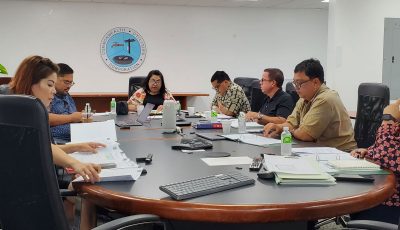EPA incurs $3.5M in unreimbursed cleanup costs
- CUC claims inability to finance power plants oil contamination cleanup
- EPA expects to spend $2M more in the future
The U.S. Environmental Protection Agency claims that it has incurred millions in unreimbursed dollars to clean up the oil contamination at the Commonwealth Utilities Corp.’s Power Plants 1 and 2 in Lower Base.
U.S. Department of Justice Environmental Enforcement Section senior attorney Bradley R. O’Brien disclosed that, although it is CUC’s obligation under the stipulated order No. 2, CUC claims an inability to finance the Power Plant 1 and 2 cleanup.
Although all oil sources have not been determined, significant contributors to the contamination include Tank 101, Tank 104, and the oil/water separator system located near the ocean between Power Plants 1 and 2, said O’Brien in EPA’s July 29 report filed in federal court on Friday.
Stipulated order No. 2 focuses on oil issues such as repairing and replacing oil storage and operation infrastructure, managing tank and pipeline facilities, and requiring spill and emergency response equipment and protocol.
EPA environmental engineer and on-scene coordinator Michelle Rogow disclosed in her declaration that EPA has spent to date about $3.5 million in costs associated with the cleanup and anticipates spending $2 million more in the future.
Rogow said that, as part of the stipulated order No. 2, CUC was required to submit a Power Plants 1 and 2 workplan to conduct a more comprehensive environmental investigation of the facility and propose necessary cleanup measures to ensure that no oil is being discharged or poses a threat of discharge to the environment from the two power plants.
EPA informed CUC that it was extremely concerned about ongoing and potential future discharges of oil to the adjacent beach, in violation of the Clean Water Act, and that a cleanup needed to be conducted.
Rogow said that, on March 17, 2011, CUC responded that it doesn’t have the funds to do the cleanup.
“Since March 2011, EPA has been working to address the oil contamination at Power Plants 1 and 2,” the environmental engineer stated.
O’Brien said EPA completed the initial response phase that addressed the significant contamination and included excavation and removal of an oil/water separator system and associated leach field, installation of a 400-foot-long interceptor trench along the shoreline, and installation of three recovery trenches.
He said the excavation of the leach field is intended to remove the ongoing discharge and prevent oil from continuing to migrate into the ocean.
O’Brien said the interceptor trench is intended to prevent continued oil migration into the ocean, while the recovery trenches are designed to extract oil from the subsurface.
He said the trenches and the recovery system have been operating for about two years and some 700 gallons of oil have been recovered from the subsurface.
O’Brien said that CUC has completed oil contamination assessments at Power Plants 1 and 2 and Power Plant 4.
He disclosed in the July 29 report that CUC’s assessments, in conjunction with broader EPA sampling, determined that Power Plants 1 and 2, Power Plant 4, Power Plant 3, and the Rota Power Plant were contaminated with oil, and Power Plants 3 and 4, and the Rota Power Plant with polychlorinated biphenyls or PCBs.



























